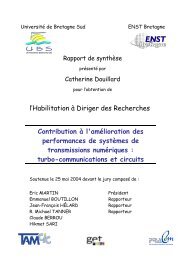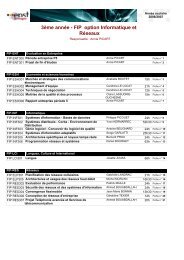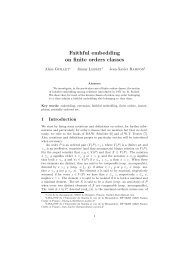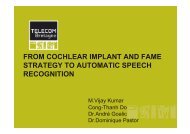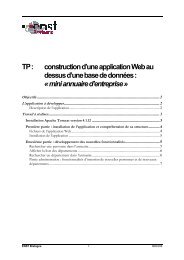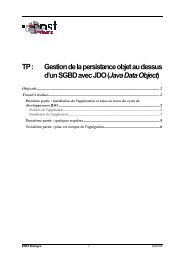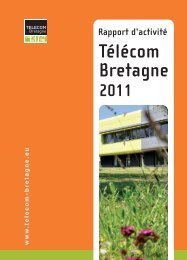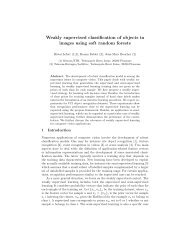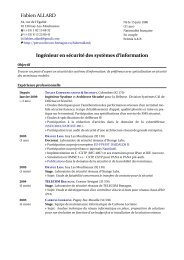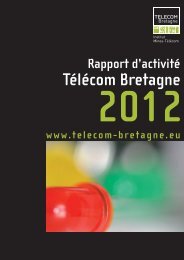researResearch - Télécom Bretagne
researResearch - Télécom Bretagne
researResearch - Télécom Bretagne
Create successful ePaper yourself
Turn your PDF publications into a flip-book with our unique Google optimized e-Paper software.
esearc<br />
<strong>researResearch</strong><br />
Following these results and the conclusions of an<br />
economic study carried out by the Technopôle<br />
Quimper-Cornouaille, the Brittany region validated<br />
the second phase of the project. This phase consists<br />
of developing and setting up a demonstrator<br />
comprising a base station and three ships.<br />
The ex-TREME project (labelled by Mer <strong>Bretagne</strong>),<br />
proposes setting up a high-rate connection between<br />
land and an embedded IP platform. This open<br />
platform is destined to exchange enriched, highrate,<br />
sensitive data with land-based sites. The<br />
solution will allow processing and diffusing data<br />
received from passenger terminals and crew<br />
members continuously in a difficult maritime<br />
environment. The partnership is between Thomson-<br />
Grass Valley, Alcatel, C2 Innovativ-systems,<br />
Morgan’conseil, Ifremer, Télécom <strong>Bretagne</strong>,<br />
a) The IFREMER ship Thalia<br />
Chantiers de l’Atlantique and Technopôle Brest-<br />
Iroise. Transmission systems, such as Wimax, Wifi,<br />
operate in frequency ranges whose propagation in a<br />
maritime environment is not well mastered<br />
especially in the agitated and metallic environment<br />
of ships.<br />
Several measurement campaigns at sea, using<br />
channel analysis equipment and WiMax<br />
communication systems (bands 3.4 and 5,4 GHz)<br />
allowed to validate the two rays maritime<br />
model.,Fading phenomena; masking effects caused<br />
by the relief and antenna disturbance by heavy seas<br />
were also shown up.<br />
A joint project with Ifremer started in 2008<br />
concerning the problems of short distance, very<br />
high-rate, underwater radio transmission. In the<br />
context of very deep, seabed observations, we<br />
envisaged adapting low-cost technology, common<br />
in the everyday Hertzien field (Wifi), to this<br />
underwater context. A preliminary study concerning<br />
the characterisation of the propagation<br />
environment, from a theoretical point of view and<br />
through initial experiments up to 18 GHz, was<br />
carried out. The limits of broadcast range were<br />
identified, as well as the necessary bases for<br />
developing solutions for antenna systems adapted<br />
to these environments. This work will continue<br />
within the framework of a thesis co-financed by the<br />
Region of Brittany and Ifremer.<br />
• CAPSYS LSU<br />
A contractualised project was completed for DGA,<br />
in partnership with INEO-Défense and Thalès. This<br />
concerned the elaboration of a demonstrator of a a<br />
single-site detection and positioning system for high<br />
frequency radio transmitters.<br />
Publications<br />
b) Example of one trajectory used<br />
Thesis<br />
PEREIRA Carlos. Etude avancée des canaux de transmission radio en<br />
contexte MIMO : environnements complexes et couplage inter-antennes<br />
très large bande.<br />
Thèse doct, Université de Poitiers, 18 Décembre 2008.<br />
32



